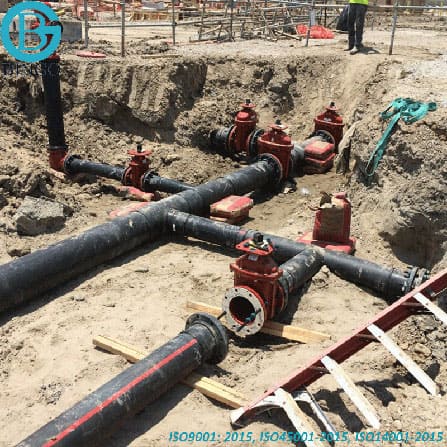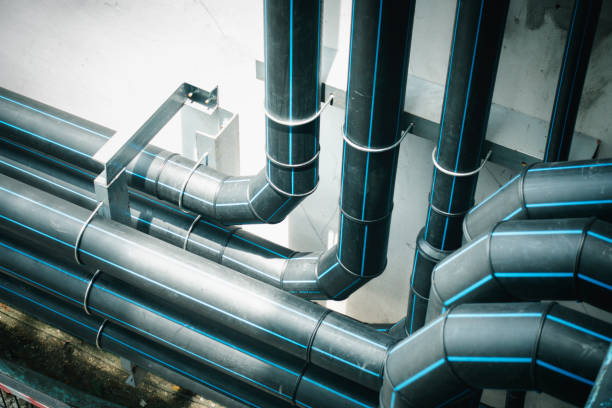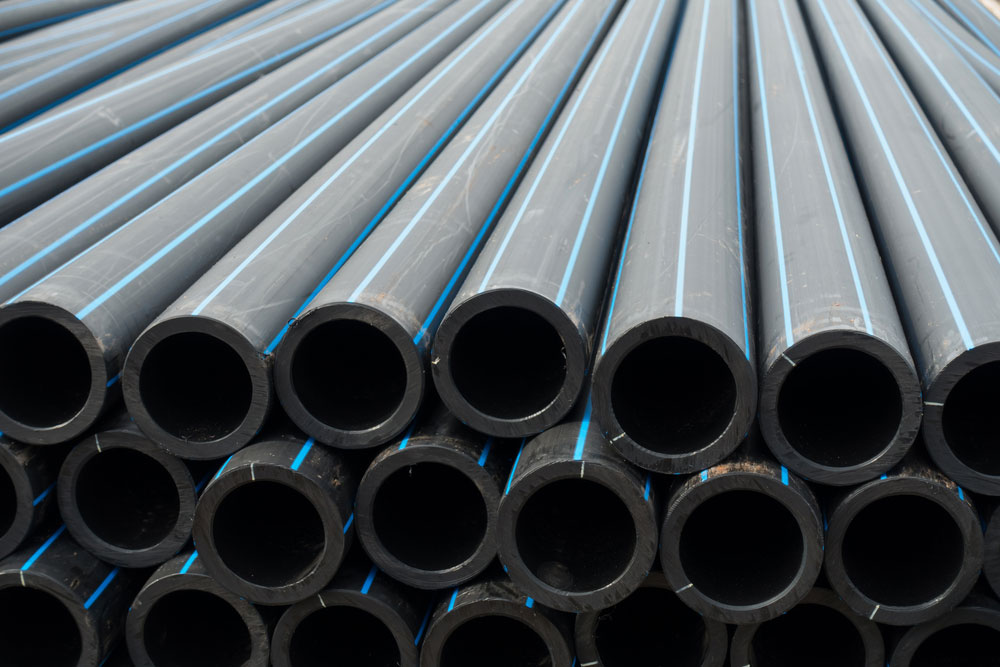Pipeline Manufacturer Spotlight: Discover the Ideal in the Market for Your Next Task
In the domain of pipeline manufacturing, the selection of maker can considerably influence the outcome of your task. With a range of firms using advanced products and innovative options, understanding the crucial criteria for choice becomes necessary. Industry leaders like Tenaris, Vallourec, and U.S. Steel go to the forefront of supplying sustainable and trustworthy options. Nevertheless, the inquiry remains: what details factors should lead your decision-making procedure, and exactly how do these suppliers differentiate themselves in an increasingly open market? Exploring these aspects may expose understandings that can affect your following project's success.
Industry Summary
In the pipeline manufacturing market, there exists a vibrant interaction of technical developments and regulative demands that forms sector techniques. This field is important for the transportation of oil, gas, water, and other fluids, requiring a robust understanding of both material residential or commercial properties and environmental impacts. Manufacturers are increasingly incorporating sophisticated materials and ingenious production methods to improve the longevity and performance of pipes, guaranteeing they can hold up against differing stress and environmental conditions.

In addition, the increase of electronic modern technologies has changed traditional manufacturing processes, permitting for improved surveillance and predictive maintenance. This change not only improves functional efficiency however additionally assists in minimizing potential failures prior to they intensify right into crucial problems. On the whole, the landscape of pipeline manufacturing is characterized by a constant advancement driven by innovation and compliance, placing the field for future growth and sustainability.
Key Requirements for Option
Picking the best pipeline maker entails mindful consideration of several key standards that ensure reliability, performance, and compliance with market requirements. Primarily, analyze the manufacturer's experience and track record within the market. A well-established company with a proven record is more probable to provide top notch product or services.
Next off, examine the series of requirements and products used. Manufacturers must give a variety of options that satisfy diverse job demands, consisting of different pipe dimensions, products, and finishing systems. Compliance with pertinent market standards, such as ASTM or API, is crucial, as it assures the products meet safety and efficiency standards.
Furthermore, think about the producer's technical capacities. Advanced manufacturing techniques and quality control actions can substantially affect the sturdiness and performance of the pipes. Client service and assistance are likewise crucial; a receptive and educated group can help with smoother project implementation and address any kind of worries promptly.
Last but not least, evaluate rates structures and preparation. While cost-effectiveness is important, it needs to not jeopardize quality. Stabilizing these criteria will certainly result in an educated decision that aligns with job objectives and regulative needs.
Top Pipeline Manufacturers
In the affordable landscape of pipeline manufacturing, several market leaders attract attention for their ingenious modern technologies and commitment to sustainability. These leading makers not only succeed in delivering top quality items yet also prioritize eco responsible methods in their procedures. An overview of their contributions supplies valuable insights into the future of pipeline options.
Sector Leaders Overview
Exactly how do market leaders form the pipeline manufacturing landscape? The leading pipeline manufacturers play a crucial duty in developing industry standards, driving development, and ensuring top quality guarantee throughout the supply chain. Companies such as Tenaris, Vallourec, and U.S. Steel have set criteria for efficiency, sustainability, and security, influencing not simply their procedures yet additionally their rivals.
These leaders spend significantly in r & d to improve item longevity and efficiency. Their dedication to sticking to governing conformity and global requirements promotes consumer count on and motivates industry-wide adoption of best practices. They commonly work together with stakeholders, including engineers and construction companies, to assure that their items satisfy particular project requirements and ecological factors to consider.
Market leaders likewise prioritize consumer partnerships, using customized services and outstanding service, which strengthens their market position. By leveraging economic situations of scale, they can provide affordable prices without compromising top quality. Eventually, the influence of these suppliers prolongs beyond their items; they shape the future of pipeline innovation and manufacturing processes, assuring a sustainable and resistant facilities for various markets worldwide.
Innovative Technologies Used
What innovative modern technologies are transforming the pipeline manufacturing market? Over the last few years, leading pipeline manufacturers have actually embraced innovative innovations to boost effectiveness, reliability, and safety in their procedures. One substantial growth is the assimilation of wise pipeline surveillance systems, using Internet of Things (IoT) sensing units. These systems offer real-time information on pipeline problems, enabling positive upkeep and reducing the risk of leakages or failings.
Additionally, producers are significantly taking on advanced materials, such as composite pipes, which use improved durability and resistance to rust. These materials not just extend the lifespan of pipelines however likewise minimize functional prices over time. Furthermore, additive manufacturing, or 3D printing, is changing the manufacturing procedure. This technology permits rapid prototyping and customization of components, streamlining supply chains and decreasing waste.
Synthetic intelligence (AI) and artificial intelligence algorithms are also acquiring traction, optimizing layout procedures and predictive upkeep schedules. By examining large datasets, these modern technologies help determine potential problems prior to they occur, boosting safety and operational performance. As these ingenious innovations continue to evolve, they assure to form the future of pipeline manufacturing, making certain that tasks can be finished on schedule and within budget while maintaining the utmost safety standards.
Sustainability Practices Highlighted
The ongoing developments in ingenious innovations within the pipeline manufacturing industry are enhanced by an expanding emphasis on sustainability techniques amongst top suppliers. These firms are progressively adopting environment-friendly methods, lowering waste, and lessening their carbon footprints throughout the manufacturing process.
Leading suppliers are prioritizing making use of recycled materials, boosting the lifecycle of their products. By applying closed-loop systems, they effectively make use of resources, therefore decreasing the ecological effect connected with resources removal and processing. In addition, several companies are investing in renewable resource resources to power their procedures, even more lowering greenhouse gas discharges.
Pipeline suppliers are embracing sophisticated finishes and products that improve rust resistance and durability, which inevitably lowers the frequency of replacements and repair work. These lasting techniques not just add to environmental stewardship but likewise line up with the expanding governing needs and market assumptions for responsible manufacturing.
Cooperation with stakeholders to foster sustainability initiatives showcases a commitment to a greener future. By concentrating on sustainable practices, top pipeline manufacturers are not only enhancing their operational efficiency however also setting a benchmark for industry standards, promoting a much more sustainable pipeline infrastructure for all.
Innovative Technologies
The pipeline industry is seeing a transformative shift through the integration of innovative technologies, particularly in innovative materials growth and clever pipeline surveillance systems. These innovations not just boost the durability and performance of pipes but also improve safety and environmental stewardship. As suppliers accept these sophisticated options, the future of pipeline facilities looks significantly appealing.
Advanced Products Advancement
Developments in sophisticated materials growth are transforming the pipeline manufacturing industry, driving improvements in efficiency, resilience, and performance. The development of high-strength alloys and composite products has actually allowed the manufacturing of pipes that can hold up against extreme problems, including high pressure and harsh environments. These products not just prolong the life-span of pipelines however additionally decrease upkeep prices, ultimately causing improved operational performance.

Innovations in polymer science have led to the creation of lightweight, versatile piping systems that are much easier to mount and move. These developments contribute to reduce carbon footprints in pipeline jobs, lining up with worldwide sustainability objectives. Furthermore, the assimilation of nanotechnology in product growth is opening new opportunities for improving the mechanical residential or commercial properties of conventional materials, resulting in pipes that can endure greater tension while maintaining integrity.
As manufacturers remain to buy r & d, the pipeline industry is observing an unprecedented evolution in material capacities. This concentrate on innovative materials not just sustains the expanding demand for reputable facilities but additionally cultivates a competitive landscape wherein business can differentiate themselves with superior item offerings. The future of pipeline manufacturing is definitely intertwined with these groundbreaking improvements.
Smart Pipeline Keeping Track Of Systems
Smart pipeline monitoring systems are transforming the landscape of pipeline administration by integrating innovative modern technologies such as IoT sensors, man-made knowledge, and real-time data analytics. Pipeline Manufacturer. These systems enable drivers to monitor the integrity and performance of pipes constantly, considerably decreasing the risk of leakages and failings
Through the release of IoT sensors along pipeline paths, drivers gather crucial data on circulation, pressure, and temperature prices. This information is transferred in real-time to central surveillance systems, permitting prompt assessment and action to abnormalities. Advanced expert system formulas analyze this data to determine patterns, forecast potential problems, and suggest preventative measures before they intensify right into pricey troubles.
The implementation of wise surveillance systems not just enhances operational effectiveness however also cultivates compliance with regulatory requirements. By supplying thorough records and understandings, these technologies sustain far better decision-making and danger administration. Furthermore, the combination of artificial intelligence capacities enables systems to improve with time, adjusting to altering problems and enhancing anticipating precision.
As the sector remains to welcome these technologies, clever pipeline surveillance systems are positioned to play a crucial duty in making certain the safety and security, integrity, and sustainability of pipeline facilities. HDPE Pipe Supplier.

Instance Research Studies of Success
Success tales within the pipeline manufacturing market illuminate the performance of ingenious solutions and cooperation among stakeholders. One remarkable situation is the partnership in between a leading producer and an oil firm to carry out a cutting edge clever pipeline tracking system. The project substantially decreased leakage detection times and boosted operational effectiveness, showcasing the value of sophisticated technology in improving safety and minimizing prices.
One more instance involves a supplier that successfully incorporated lasting materials right into their pipeline construction. By working together with study institutions, they established a composite product that is not only long lasting yet also ecologically pleasant. This development not just fulfilled regulatory demands yet also drew in brand-new customers seeking sustainable options.
Additionally, a pipeline job in a difficult geographical area showed the significance of adaptive design strategies. The supplier collaborated with regional engineers to create a pipe that can withstand extreme weather conditions, eventually stopping solution disturbances and making certain integrity for end-users.
These instance studies exhibit just how strategic partnerships, technical advancements, and adaptive solutions in the pipeline manufacturing sector lead to successful project end results, therefore enhancing the sector's dedication to providing top notch facilities while attending to client needs effectively.
Sustainability Practices
As the pipeline manufacturing market develops, the integration of sustainability techniques has come to be significantly essential. Manufacturers are adopting eco-friendly products and processes to decrease their environmental impact while preserving high standards of top quality and safety. This change is driven by both regulative requirements and an expanding awareness of ecological responsibility amongst stakeholders.
One popular strategy is making use of recycled products in pipeline production, which reduces the demand for virgin sources and decreases waste. Firms are also purchasing energy-efficient manufacturing techniques, consequently decreasing their carbon footprint throughout manufacturing. Additionally, lots of manufacturers have taken on water conservation methods, making certain that water usage is lessened and wastewater is Web Site dealt with effectively.
Lasting transportation techniques are being made use of to supply materials, including optimizing logistics to minimize exhausts. The dedication to lifecycle assessments allows makers to examine the ecological influence of their products from inception to disposal, promoting not only sustainability however likewise long-lasting financial feasibility.
Inevitably, the fostering of sustainability techniques in pipeline manufacturing signifies a vital step toward aligning industry operations with global environmental objectives, ensuring that future projects are both responsible and cutting-edge - American Plastics LLC HDPE Pipeline Manufacturer. - Pipeline Manufacturer
Future Trends in Pipeline Manufacturing
What developments are on the horizon for pipeline manufacturing? As the market progresses, a number of crucial patterns are forming the future of pipeline manufacturing. The assimilation of innovative products such as composite pipes promises enhanced durability and resistance to deterioration, therefore expanding the life expectancy of pipelines. These materials not just minimize maintenance costs yet additionally enhance safety standards.

Sustainability remains a critical focus, with makers significantly prioritizing environmentally friendly techniques. The development of naturally degradable products and the execution of reusing programs are obtaining grip, aligning with international environmental goals.
Regularly Asked Inquiries
What Materials Are Typically Utilized in Pipeline Manufacturing?
Usual products made use of in pipeline manufacturing include carbon steel, stainless-steel, polyethylene, and pliable iron (Texas Pipeline Manufacturer). Each material supplies unique benefits concerning strength, rust resistance, and suitability for various applications within the pipeline industry
How much time Does the Pipeline Manufacturing Process Usually Take?
The pipeline manufacturing procedure usually ranges from a few weeks to numerous months, depending upon variables such as material selection, production capability, and personalization needs. Reliable preparation and control can greatly influence the overall timeline.
What Are the Most Common Pipeline Sizes Available?
The most common pipeline sizes range from 2 inches to 48 inches in diameter. Irregularity exists based on specific applications, industry criteria, and regional requirements, guaranteeing versatility to satisfy diverse job demands and functional requirements.
Are There Guarantees Provided on Pipeline Products?
Yes, numerous pipeline producers provide warranties on their items, typically covering product issues and handiwork. The period and terms of these warranties differ by supplier, so it is vital to examine certain policies prior to acquisition.
Exactly how Do I Guarantee Proper Installment of Pipelines?
To guarantee correct setup of pipelines, follow sector requirements, utilize certified experts, conduct detailed website assessments, implement top quality control steps, and secure conformity with policies. Normal assessments and maintenance better boost pipeline efficiency and durability.
Pipeline manufacturers are accepting advanced layers and materials that boost rust resistance and long life, which eventually lowers the frequency of substitutes and repairs. The pipeline sector is witnessing a transformative change through the combination of cutting-edge innovations, specifically in advanced products growth and smart pipeline tracking systems. As manufacturers continue to spend in research and advancement, the pipeline sector is witnessing an unmatched advancement in material abilities. Smart pipeline surveillance systems are changing the landscape of pipeline management by integrating sophisticated technologies such as IoT sensors, man-made knowledge, and real-time data analytics. Yes, numerous pipeline makers supply warranties on their products, normally covering product issues and workmanship.